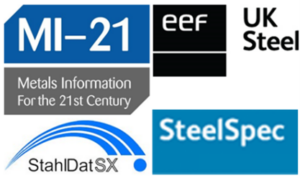The Advanced Material Data libraries in ANSYS Granta Selector offer significant benefits to university student teams by providing access to specialised material data that is tailored to their unique needs. These libraries empower students to make informed decisions in their engineering projects, whether they are working with metals, polymers, composites, or electromagnetic materials. By leveraging these resources, university teams can enhance the precision and effectiveness of their material selection process.
Let’s take a look at the wide range of industries covered by the Advanced Materials Data libraries and dive into a few examples:

Additive Manufacturing
In Additive Manufacturing, Granta Selector can give access to the Senvol Database™ which offers a vast collection of data on industrial AM machines and materials. With details on over 1,480 machines and 3,000+ materials, it streamlines your manufacturing process. Perfect for university teams designing parts, it provides:
- Fast access to leading AM machine and material data
- Comparison of materials produced by additive vs. conventional techniques
- Material and machine selection based on type, performance, process, and cost
Data Source:

The following video demonstrates the selection process for an AM grade and the process for an impeller for water pumps. Similar procedures can be used for other Granta Advanced Materials Databases.
Metals
The Metals database gives you access to a robust combination of Design, Test, and Standards data, including the Global Metals Specifications database, Powder Metallurgy, and sheet steels. This is crucial for projects requiring detailed metals data, with specifications from ASM International. Perfect for international teams, such as those in SAE Motor Sport or Human Power vehicles, this database helps you find equivalent and alternative materials used globally, answering questions like:
- What is the British equivalent of Z6CND16 05 01?
- Which materials with Chinese specifications meet my requirements?
- What is JIS H 5114?
- Which steels have a minimum impact energy of 27J?
Data sources:


Polymers
For polymers, the Global Polymers Dataset in Granta Selector features datasheets on plastics, elastomers, and plastic additives materials. Ideal for diverse polymer applications, it includes over 105,000 data sheets from more than 950 manufacturers. This resource supports engineers in:
- Choosing and validating polymer materials for components in Lunar rovers, UAVs, casing, rubber wheels, gaskets, and seals.
- Comparing and selecting plastic grades from different producers.
- Finding alternative grades based on property profiles with the ‘Find Similar’ tool.
- Identifying plastic grades based on application, key features, performance, agency ratings, and regional availability.
Data Source:

Composites
The comprehensive Composites data bundle is a valuable resource for engineers and designers working with composite materials across various industries. It includes data from composite manufacturers and many leading research groups in this field, along with standards and specifications from notable sources.
Mil-Handbook-17, the Composite Material Handbook from the U.S. Department of Defense, supports the design and fabrication of items from composite materials, particularly in the aerospace sector. Additionally, the database features Firehole Composites, a leading compilation of data on continuous fiber-reinforced polymers. This includes information on over 400 composite systems tested under various in-service conditions, covering composition, processing, mechanical and thermal properties, regional availability, and data rating.
Utilise this data module to enhance your design and fabrication processes for products made from composite materials. It’s particularly useful for applications requiring a good strength-to-weight ratio, such as FSAE racing and UAV teams, or for creating custom-shaped panels for solar cars and human-powered vehicles. The database allows you to identify composite systems based on:
- Performance criteria
- Test/in-service environment
- Fiber/matrix type and reinforcement forms
- Regional availability
- Data quality
Data source:

Aerospace
The Aerospace Database offers access to the Metallic Materials Properties Development and Standardization (MMPDS) Handbook. This includes data on aerospace alloys and coatings, as well as a comprehensive fastener database. Ideal for rocketry teams, this module helps you find world-class materials and provides U.S.-sourced design allowable on aerospace alloys. Use it to specify materials based on:
- Design criteria (elastic, plastic, creep, fatigue, corrosion, weldability)
- Performance at operating temperature
- Information on joints and fasteners
- Fastener selection based on joint configuration and requirements
Data Source:

Electromagnetics
For Electromagnetics, the database contains information on materials for low and high-frequency applications, including PCBs, magnets, and EM shielding materials. This is useful for teams designing electronic components, such as Formula SAE Autonomous, Rocketry, and Lunar Rover teams. The module allows you to:
- Find and compare specific grades of PCB, magnet, and radar-absorbing materials
- Select PCB materials based on resin type, thermal and frequency performance
- Identify magnetic materials based on magnetic, mechanical, and electrical properties
- Export technical properties for further design and simulation in Ansys tools
Data Source:
![]()
While this post highlights some of the advanced databases available in Granta Selector, there are still many more to explore, including resources from the German Steel Institute, UK Steel, World Metals Index (WMI), Aerospace Coatings, Eco Design, Medical.
If you have any questions or wish to get started with Granta Selector, please contact your university account manager or your local LEAP Australia office to find out more.

